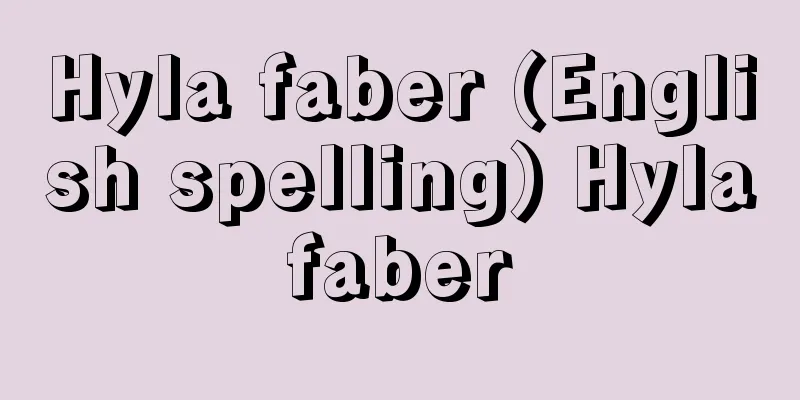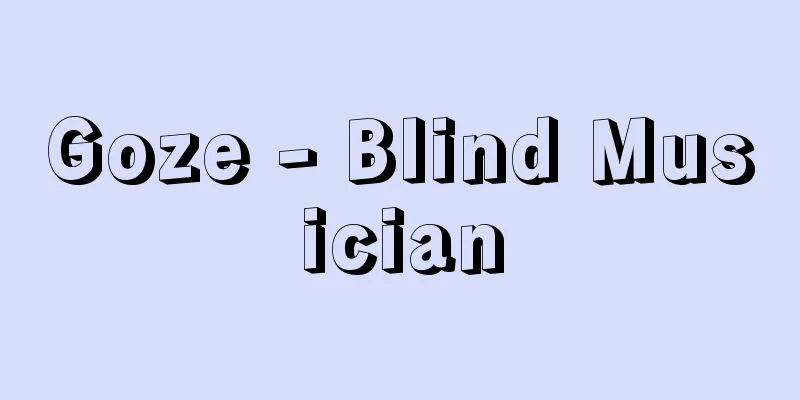Galileo Galilei

|
Italian physicist and astronomer. One of the founders of modern science. LifeHe was born in Pisa to Vincenzo Galilei (1520-1591), a member of the Florentine minor nobility who was on the decline, and Giulia Ammannati (1538-1620), the eldest of seven children. He returned to Florence with his family at the age of 10, and at around 12-13 he entered a monastery school where he studied classical languages. In 1581 he entered the medical school of the University of Pisa, and in 1583 he discovered the isochronism of the pendulum, but at the time the University of Pisa was dominated by scholastic scholars and was far from being a place of truth-seeking. He then entered the Traveling Noble School run by the Grand Duke of Tuscany, where he learned Euclidean geometry and Archimedes' mechanics under Ostilio Ricci (1564-1642), who had a strong influence on him. He dropped out of the University of Pisa in 1585, and submitted two papers, "On the Small Balance" and "On the Center of Gravity of Solids," to the Academy of Florence in 1587. This led to his acquaintance with Guidobaldo Del Monte (1545-1607), Marquis of Del Monte, who would later support him. In 1589, through the connections of the Marquis del Monte and the thesis he had submitted to the Academy, he became a mathematics lecturer at the University of Pisa. He spent three years at the University of Pisa, during which time he conducted experiments on falling bodies using an inclined plane, and wrote "On Motion" (1590). The experiment on the Leaning Tower of Pisa seems to be legendary. In 1592, he was transferred to the position of full professor of mathematics at the University of Padua. At the age of 28, he moved to the University of Padua, where he spent the next 18 years of tranquility and success, teaching Euclidean geometry and Ptolemaic astronomy, giving private lessons, writing works such as A Simple Introduction to Military Techniques, Fortifications, and Les Mécaniques, and also researching the applied mathematics he had learned from Ricci, producing and selling a variety of slide rules. In terms of his personal life, he fell in love with a woman named Marina Gamba (1570-1612?) and although they did not officially marry, they had a daughter, Virginia (1600-1634), in 1600, a daughter, Livia (1601-1659), in the following year, 1601, and a son, Vincenzo (1606-1649), in 1606. Of all the women, Virginia was loved by Galileo and became a great source of comfort to him in his later years. In 1610, Galileo left the University of Padua and became the first mathematician and philosopher to the Grand Duke of Tuscany, so that he could devote himself to writing and research in Florence. In the following year, 1611, he became a member of the Academy of Lincei, but in 1615 he was accused by the Inquisition in Rome, and the following year, in 1616, the first verdict of the Inquisition was handed down. In 1632, the second trial began, and he was declared an oath of heresy and imprisoned in Arcetri. In 1638 he lost both eyes, and in 1642 he died of illness. He was not permitted any funeral or grave marker. [Satoshi Ihara] The Eyes of a Modern ScientistGalileo's earliest scientific achievement was the "Little Balance." This work describes a method of solving with high precision a problem related to the monetary system of the time, which was to quantitatively determine the amount of gold and silver contained in currency, by using a balance and specific gravity. Unlike the scholastics, this work shows his attitude of trying to solve practical academic and technical problems through experimental methods. This perspective is made clearer in his lecture notes on mechanics at the University of Padua, "Les Meccaniches," in which he pursued the rational design of complex machines using single machines (levers, pulleys, etc.). In this work, Galileo discusses the usefulness of machines from a practical perspective, in which single machines perform work through human muscle labor, but also points out that "machines do not acquire power," that is, it takes a long time to do work with a small force. He reduces this to the principle of the lever and develops it in dynamics. In other words, rather than understanding the principle of the lever as Archimedes' static theory of balance based on the ratio of weight to the length of the arm, he first understood the overall function of the lever, in which applying force to one end of the lever causes the other end to move an object, and then analyzed the relationship between the path of the point of application of force and the time (speed) over which that path is traced. He then collectively called weight, distance (the length of the arc traced by the end of the lever), time (speed), etc., "moment," and expressed the idea that "no force is gained" because moment is constant. This idea would eventually give rise to his work On Accelerated Motion (1604), which clarified the mechanics of moving objects, such as the law of inertia on earth. [Satoshi Ihara] Criticism of the geocentric theory and the religious trialsIn 1609, when Galileo learned that the telescope had been invented in the Netherlands, he immediately built a refracting telescope and pointed it at celestial bodies. He discovered that the moon is not a perfect sphere but has irregularities, and the following year, in 1610, he discovered four moons of Jupiter and sunspots. He published these as "Report from the Stars" (1610), and in 1613 he published "De Concerning Sunspots." From this time on, he became more and more convinced of the heliocentric theory based on the results of his own astronomical observations, and began to explain the contradictions between the heliocentric theory and the Bible in letters to his students and to the mother of the Grand Duke of Tuscany, which led to him being accused of heresy by the Holy Office of the Inquisition in 1615 (First Inquisition). The following year, in 1616, he received a fairly mild verdict, a warning not to preach the heretical theory of heliocentrism. In 1618, he published "Lectures on the Comet" under the name of his disciple (1619) in relation to the appearance of a comet, but once again the Copernican theory became an issue and he became embroiled in a controversy. In 1623, he published "The Counterfeit Coin Searcher" in which he presented a rebuttal to his critics, and in 1625, he began writing a book to fully explain the heliocentric theory based on his previous research results. It took six years to complete in 1630, and was published in February 1632 as "Dialogue Concerning the Heavenly World." The main point of this book was to state the consistency between the Copernican theory and the theory of mechanics on Earth, that is, the equivalence of heaven and earth. In July 1632, a ban was issued on its publication, and in October, a summons was issued to appear before the Inquisition in Rome, and the second religious trial began. The verdict was handed down in June of the following year, 1633, and he was forced to "abjure his heresy" and was imprisoned from December onwards. In 1634, his eldest daughter Virginia died, and soon afterwards he became blind in both eyes. After his imprisonment, he worked on writing his great work, Dialogues on the New Sciences, which he nearly completed in 1635, but was unable to publish in Italy and was published in the Protestant Netherlands in 1638. In 1641, he had his student Torricelli, who was in his later years at the time, dictate "On the Original Geometry of Euclid," for the fifth day of Dialogues on the New Sciences, and this was published in Florence in 1674 after his death. Written after he was 70 years old, Dialogues on the New Sciences also reveals the struggles he faced at the beginning of modern science, when he had broken down Aristotelian theory, which had become the dogma of the church, and had a strong interest in and pioneered practical science. He wrote many of his papers in Italian, and did not make it an academic field limited to those who could speak Latin, but sought to have it widely understood by the general public, and he also maintained an insightful attitude toward the separation of religion and science. [Satoshi Ihara] "The Trial of Galileo" by Santillana and supervised by Takeya Mitsuo (1973, Iwanami Shoten)" ▽ "World Masterpieces 26: Galileo" edited by Toyoda Toshiyuki (1979, Chuokoron-Shinsha)" ▽ "The Life of Galileo" by S. Drake, translated by Tanaka Ichiro, 3 volumes (1984-1985, Kyoritsu Shuppan)" ▽ "Galileo" by Ito Shuntaro (1985, Kodansha)" ▽ "Galileo Galilei" by Aoki Yasuzo (Iwanami Shinsho)" [References] | | | | | | [Chronology] |Source: Shogakukan Encyclopedia Nipponica About Encyclopedia Nipponica Information | Legend |
|
イタリアの物理学者、天文学者。近代科学の創始者の一人。 生涯没落しつつあったフィレンツェの小貴族出身のビンチェンツォVincenzo Galilei(1520―1591)を父に、アマナッティGiulia Ammannati(1538―1620)を母に7人兄弟の長男としてピサに生まれる。10歳で一家とともにフィレンツェに戻り、12~13歳ころ修道院付属学校に入り古典語学などを学んだ。1581年ピサ大学医学部に入学、1583年に振り子の等時性を発見するが、当時のピサ大学はスコラ学者が勢力をもち、真理探究の場にはほど遠かった。そこでトスカナ大公主催の移動貴族学校に入り、ここでリッチOstilio Ricci(1564―1642)にユークリッド幾何学やアルキメデスの力学を学び強い影響を受けた。 1585年ピサ大学を退学、1587年フィレンツェのアカデミーに「小天秤(しょうてんびん)」「固体の重心について」の2論文を提出した。これが契機となり、その後支援を受けるデル・モンテ侯爵Guidobaldo Del Monte(1545―1607)と知己となった。 1589年デル・モンテ侯のつてと、アカデミーに提出していた論文とによりピサ大学数学講師となる。3年間をピサ大学で過ごすが、その間に、斜面を用いて落体の実験を行い、「運動について」(1590)を書いた。なおピサの斜塔の実験は伝説らしい。1592年パドバ大学数学正教授に転任した。 28歳でパドバ大学に移ったが、以降18年間が彼にとって穏やかで実り多い時代であった。大学ではユークリッド幾何学およびプトレマイオス天文学を教え、私的な授業を行い、「簡単な軍事技術入門」「築城論」「機械学(レ・メカニケ)」などを著し、また、かつてリッチに学んだ応用数学を研究して種々の計算尺を製作、販売するなどした。 生活面ではマリナ・ガンバMarina Gamba(1570―1612?)という女性と恋に落ち、正式な結婚はしなかったが、1600年に長女ビルジニアVirginia(1600―1634)、翌1601年次女リビアLivia(1601―1659)、1606年長男ビンチェンツォVincenzo(1606―1649)が生まれ認知した。なかでもビルジニアはガリレイに愛され、晩年になってからの彼の大きな慰めとなった。 1610年ガリレイはパドバ大学を去り、トスカナ大公の第一数学者兼哲学者としてフィレンツェで著作、研究活動に専念できるようになった。翌1611年リンチェイ学士院会員となるが、1615年ローマの異端審問所に告発され、翌1616年第一次宗教裁判の決が下った。1632年第二次裁判が始まり、「異端誓絶」を宣告されアルチェトリに幽閉される。1638年両眼を失明、1642年病没。いかなる葬儀も墓標も不許可であった。 [井原 聰] 近代的科学者の眼ガリレイのもっとも初期の科学的業績は「小天秤」であった。これは、貨幣中に含まれる金・銀を定量的に決定するという当時の通貨体制にかかわる課題を、天秤と比重を利用して高い精度で解決する方法を論述したものである。ここには、スコラ学者と違って、実用的学問、技術的課題を実験的手法で解明しようとする姿勢がみられる。この観点は、パドバ大学での機械学での単一機械(てこ、滑車など)により複合機械を合理的に設計することを追究した講義ノート「レ・メカニケ」でより鮮明となる。ここでは、単一機械が人間の筋肉労働によって仕事をするものであるという実践的視点から、機械の有用性を論じながらも、「機械は力を得しない」こと、つまり小さな力で仕事をするには長い時間を必要とすることを指摘した。このことを「てこ」の原理に帰着させて、動力学的に展開する。すなわち、てこの原理を重さと腕の長さの比によるつり合いというアルキメデスの静的な理論としてとらえるのではなく、てこの一端に力を加えることによって他端が物体を動かすという、てこの機能の全体を把握したうえで、力の作用点の軌跡とその軌跡が描かれる時間(速さ)との関係を分析する。そして重さ・距離(てこの先が描く弧の長さ)・時間(速さ)などをまとめて「モーメント」とよび、モーメントの不変から「力を得しない」と表現する。この考えがやがて運動物体の力学、たとえば地上における慣性法則を明らかにした『加速運動について』(1604)を生むことになる。 [井原 聰] 天動説批判と宗教裁判1609年、オランダで望遠鏡が発明されたことを知ったガリレイはただちに自ら屈折望遠鏡を製作してこれを天体に向けた。そして月が完全な球でなく凹凸があることを発見し、翌1610年には木星の4個の衛星、太陽の黒点を発見、これらを『星界からの報告』として刊行(1610)、1613年には『太陽黒点論』を公刊した。 このころから自らの天文観測の結果に基づいて地動説に対する確信を深め、地動説と聖書の矛盾を弟子やトスカナ大公の母公あての手紙に述べるようになり、これがもとで1615年、教皇庁検邪聖省に異端を告発される(第一次宗教裁判)。翌1616年かなり穏やかな判決、つまり異端の説である地動説を説いてはならないという警告を受けた。 1618年彗星(すいせい)の出現にかかわって弟子の名で『彗星についての講話』を発表(1619)、ふたたびコペルニクス説が問題となり、論争に巻き込まれ、1623年に彼の批判者への反論を展開した『偽金(にせがね)鑑識官』を刊行、1625年にはそれまでの研究成果のうえにたって地動説を全面展開するための著述にとりかかり、6年間をかけて1630年に脱稿、1632年2月『天文対話』として刊行された。この著の主要な論点は、コペルニクス理論と地球上での力学理論の整合、つまり天地の同等性を述べることにあった。1632年7月発売禁止令が、10月ローマの異端審問所への出頭命令が出て第二次宗教裁判が始まった。翌1633年6月判決が下り、「異端誓絶」を強制され、12月以降幽閉の身となった。1634年長女ビルジニアが死去し、ほどなく両眼を失明した。 幽閉されてのち、大著『新科学対話』の執筆に努め、1635年ほぼ完成したが、イタリアでは出版できず、新教国オランダで1638年に出版した。1641年、晩年の弟子のトリチェリに口述筆記させて『新科学対話』第5日目用の『ユークリッドの幾何学原本について』を脱稿、これは彼の没後、1674年フィレンツェで出版された。70歳を過ぎて執筆された『新科学対話』には、教会の教義と化したアリストテレス理論を打ち壊し、実用的科学に強い関心をもち、かつ切り開いてきた近代科学創始のころの労苦も読み取れる。 論文の多くをイタリア語で書き、ラテン語を操れる人だけの学問にせず、民衆にも広く理解を求めたり、宗教と科学との分離にも見識ある態度を貫いた。 [井原 聰] 『サンティリャーナ著、武谷三男監修『ガリレオ裁判』(1973・岩波書店)』▽『豊田利幸編『世界の名著26 ガリレオ』(1979・中央公論社)』▽『S・ドレーク著、田中一郎訳『ガリレオの生涯』全3巻(1984~1985・共立出版)』▽『伊東俊太郎著『ガリレオ』(1985・講談社)』▽『青木靖三著『ガリレオ・ガリレイ』(岩波新書)』 [参照項目] | | | | | | [年表] |出典 小学館 日本大百科全書(ニッポニカ)日本大百科全書(ニッポニカ)について 情報 | 凡例 |
>>: Galilee - Galilee (English spelling)
Recommend
Mosaddeq (English spelling)
1880. (Some say 1881.) - March 5, 1967 Iranian po...
lovat green (English spelling) lovatgreen
…(5) Lovat This is a relatively new fabric, creat...
"The Three Groups of Lovers, Soga"
…He wrote hit kyogen plays such as Edo Murasaki K...
Hoxha, E. (English spelling) HoxhaE
…Official name = Republic of AlbaniaRepublika e S...
Albuquerque - Afonso de Albuquerque (English spelling)
Portugal's second Viceroy of India (in office...
Mother
…The outline of this theory is first shown in the...
Social Problem Research
Kawakami Hajime's personal magazine, first pub...
Rhine Towns Alliance (English spelling) Rheinischer Städtebund German
In the late Middle Ages, an alliance was formed b...
Munda languages - Munda languages
The language of the Munda people. Also known as Kh...
Book of Tang Dynasty
An official history of the Tang dynasty in China....
Erewhon - Erehon
…He also shocked the world by announcing (1897) h...
Halmahera [island] - Halmahera
Also known as Jailolo Island. The largest island i...
Kasuga Shrine (Kochi)
...Hakuun Shrine, located in the center of Himeno...
Chondrus verrucosa (English spelling) Chondrusverrucosa
…[Mitsuo Chihara]. . . *Some of the terminology t...
Market - Joshi
A type of market in Korea, it does not have any sp...









